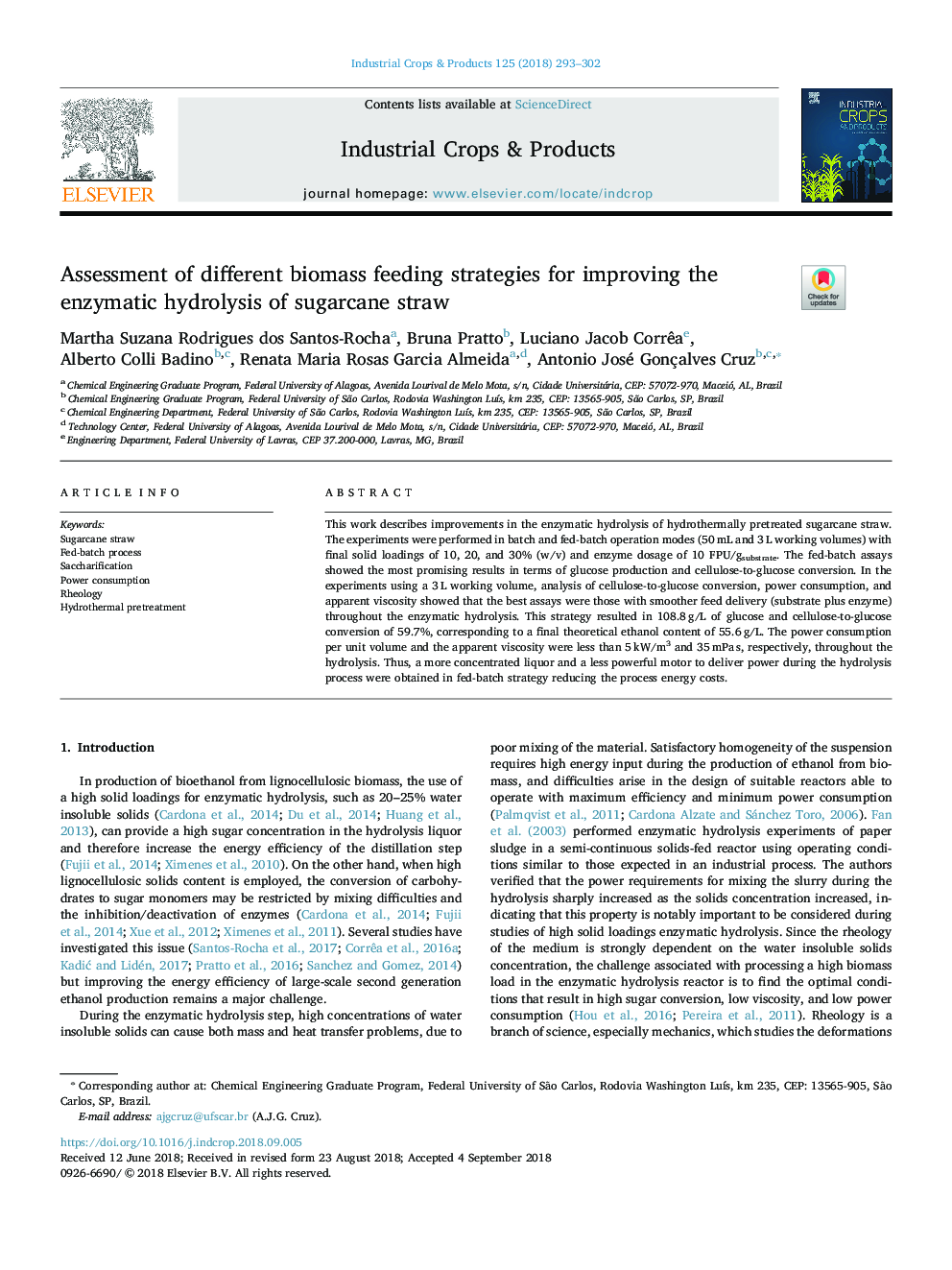| Article ID | Journal | Published Year | Pages | File Type |
|---|---|---|---|---|
| 10149756 | Industrial Crops and Products | 2018 | 10 Pages |
Abstract
This work describes improvements in the enzymatic hydrolysis of hydrothermally pretreated sugarcane straw. The experiments were performed in batch and fed-batch operation modes (50âmL and 3âL working volumes) with final solid loadings of 10, 20, and 30% (w/v) and enzyme dosage of 10 FPU/gsubstrate. The fed-batch assays showed the most promising results in terms of glucose production and cellulose-to-glucose conversion. In the experiments using a 3âL working volume, analysis of cellulose-to-glucose conversion, power consumption, and apparent viscosity showed that the best assays were those with smoother feed delivery (substrate plus enzyme) throughout the enzymatic hydrolysis. This strategy resulted in 108.8âg/L of glucose and cellulose-to-glucose conversion of 59.7%, corresponding to a final theoretical ethanol content of 55.6âg/L. The power consumption per unit volume and the apparent viscosity were less than 5âkW/m3 and 35âmPaâs, respectively, throughout the hydrolysis. Thus, a more concentrated liquor and a less powerful motor to deliver power during the hydrolysis process were obtained in fed-batch strategy reducing the process energy costs.
Keywords
Related Topics
Life Sciences
Agricultural and Biological Sciences
Agronomy and Crop Science
Authors
Martha Suzana Rodrigues dos Santos-Rocha, Bruna Pratto, Luciano Jacob Corrêa, Alberto Colli Badino, Renata Maria Rosas Garcia Almeida, Antonio José Gonçalves Cruz,
